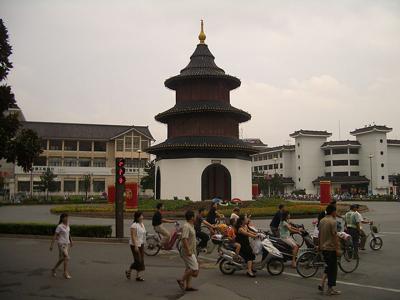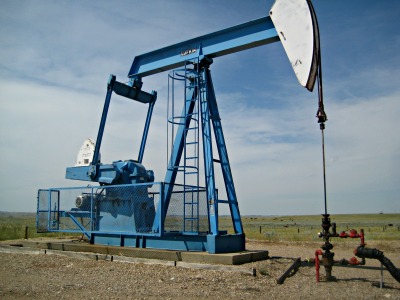Gaspe Sky
by Linda Miller
(Wakeham, Gaspe, Quebec.)

Here! Gaspe at this.
Thought this was a very unusual cloud formation in the western sky. Pictures were taken in the morning of Sept. 8, in Wakeham, Gaspe, Quebec.
Barry's Response - It's probably unusual in some places to have a straight edge like that. Chinook winds are common in Calgary on the lee side of the mountains.
At that level, it shows a clear boundary between subsidence and updraft. Thank you, Linda, for the photos.
The Gaspé Peninsula is the part of Quebec that sticks out eastward south of the St. Lawrence River. It's a city of 15,000 and has a long history as a hub of Francophone development. It was claimed by Jacques Cartier in 1534 with "Vive le Roi de France".
How's the air out there?
There's a Dfb climate here (Humid Continental with relatively short warm summers). They once had a temperature of 35°C (95°F). It's usually cold...-47°C once. There's usually a foot and a half of snow on the ground throughout the winter, which ends in April.
On the coast, March is the windiest month. Take a trip to Gaspé, Quebec. Mid-summer would be great.
search this site for more information now.
Can you tell me if Quebec has ever seen a chinook?
Quebec, Canada, has reported Chinook winds. Chinooks are typically associated with the western regions of North America, especially the Rocky Mountains and western parts of the United States and Canada, but they can sometimes appear in other regions under certain weather conditions.
Chinooks are less common in Quebec and usually hang out near the Labrador and Newfoundland border. As a result of these warm, dry winds, the temperature can suddenly rise, melting snow rapidly and causing a temporary thaw.
As they descend from higher elevations, Chinooks raise temperatures dramatically over a short period of time. For this type of weather, Quebec isn't as famous as Alberta, where Chinooks are more common and more well-known.
Do you have concerns about air pollution in your area??
Perhaps modelling air pollution will provide the answers to your question.
That is what I do on a full-time basis. Find out if it is necessary for your project.
Have your Say...
on the StuffintheAir facebook page
Other topics listed in these guides:
The Stuff-in-the-Air Site Map
And,
Thank you to my research and writing assistants, ChatGPT and WordTune, as well as Wombo and others for the images.
GPT-4, OpenAI's large-scale language generation model (and others provided by Google and Meta), helped generate this text. As soon as draft language is generated, the author reviews, edits, and revises it to their own liking and is responsible for the content.








